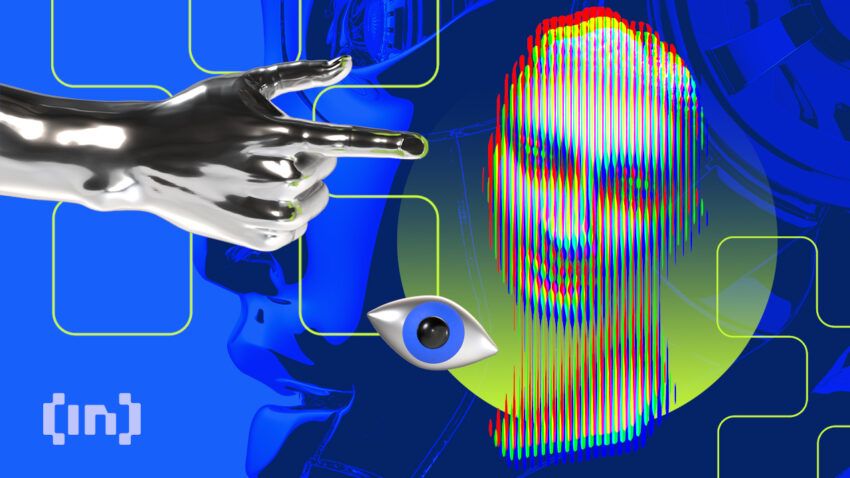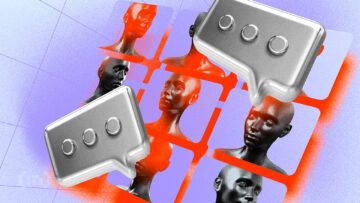Both DALL-E 2 and the DALL-E Mini have been making waves in the rapidly evolving world of AI image generators. But how does the DALL-E Mini compare with the DALL-E 2?
On one side, DALL-E 2 is a flagship product of OpenAI’s engineering. On the other, DALL-E Mini, which now dons the moniker Craiyon, is an independent venture inspired by the original DALL-E. Though they share the same objectives, don’t be misled by the similar-sounding names. These two AI image generators each have their unique quirks and qualities that we explore in the comprehensive guide.
Believe that AI is our future? Join BeInCrypto Trading Community of crypto-lovers on Telegram: learn more about the currency of the future and decentralized systems, start trading with our FREE Trading Basics course and discuss coin trends with PRO traders!
DALL-E Mini vs. DALL-E 2: An overview

One at a time — here’s a quick look below the hood of each AI image generator.
A quick overview of DALL-E 2
DALL-E 2 is the successor to the original DALL-E model. OpenAI released DALL-E 2’s beta version in July 2022 before releasing the tool to the general public in September.
The moniker DALL-E is a clever combination of Salvador Dalí — a renowned surrealist painter — and Wall-E, the popular animated Pixar character. It aptly reflects DALL-E 2’s ability to produce high-quality, artistic images showcasing impressive control over styles, subjects, perspectives, backgrounds, and concepts, thanks to its advanced natural language processing capability. Let’s quickly skim through its modus operandi.
DALL-E 2’s image generation involves the collaborative efforts of both “prior” and “unCLIP” models. Central to its architecture is the CLIP model, comprising two neural networks trained on extensive image-text pairs. These create vector representations known as text/image embeddings. This connection forms a bridge between the text input and image output.
In this process, the prior model generates CLIP image embeddings from the input caption or CLIP text embedding. Meanwhile, the inverse of the original CLIP model, known as the Decoder Diffusion model or unCLIP, generates images from these CLIP image embeddings.
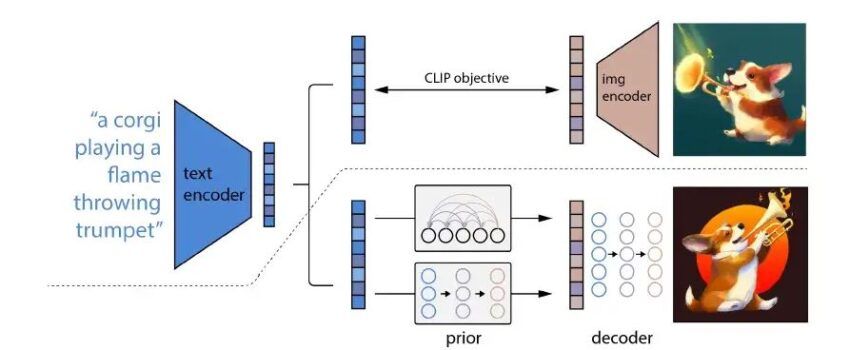
The unCLIP model conjures a mental image, maintaining semantically consistent core attributes such as animals, objects, colors, styles, and backgrounds. But, the resulting image is an entirely new creation. The interplay between the prior and unCLIP models culminates in the output image.
While this overview provides a peek into DALL-E 2’s workings, the technical specifics and mathematics behind its implementation are considerably intricate. If you’re curious about the nitty-gritty of DALL-E 2, OpenAI released a paper called “Hierarchical Text-Conditional Image Generation with CLIP Latents” in Sept. 2022.
Craiyon (previously DALLE- Mini) in a nutshell
Machine learning engineer and entrepreneur Boris Dayma is the mastermind behind Craiyon. It uses text-to-image technology to create high-quality images based on text prompts. Initially known as DALL-E Mini, a request from OpenAI led to its rebranding to sidestep any potential mix-ups.
Did you know Boris Dayma kickstarted his DALL-E Mini open-source project after gaining access to Google’s TPUs at a Hugging Face and Google Hackathon, six months after he read OpenAI’s Dall-E paper. Talk about waiting for the right moment!
As a compact version of OpenAI’s DALL-E model, Craiyon combines the power of two neural network types – a transformer and a generator. But, it takes a detour from the usual Generative Adversarial Networks (GANs), processing textual cues to create matching images and combining visual data with natural language processing.
The training of Craiyon involves feeding it a huge volume of images, each accompanied by a descriptive caption. This enabled the AI to associate text prompts with image generation. Its training incorporated a blend of reconstruction loss and adversarial loss, enabling the technology to recall themes from its memory bank of images and invent novel visuals by merging diverse ideas.

Dayma and the open-source community fast-tracked Craiyon’s progress in generating top-tier images. While the technical intricacies behind its evolution are extensive, Craiyon’s core mission remains to serve as an innovative instrument that can conjure up unique, creative images from textual descriptions.
Did you know? While DALL-E Mini and DALL-E 2 offer market leading AI imgage generation tools, some competitors are upping the ante. If you’re looking for an all-in-one AI tool which also offers AI content writing services, check out Picsart.
DALL-E Mini vs. DALL-E 2: Pricing
OpenAI gifted early birds who signed up for DALL·E before April 6, 2023, with complimentary credits. However, the credits are on a “use-it-or-lose-it” basis and refill monthly. Meaning they must be used within a month of being issued.
If you’re running low, additional DALL·E credits can be purchased through your account page or profile photo dropdown menu. As of May 2023, OpenAI offers a bundle of 115 credits for $15. If you are a business user, both free and paid credits are shareable within your organization’s account.
Don’t forget, while free credits are set to expire a month post-grant, the paid ones come with a more generous lifespan of 12 months from the purchase date. Both free and paid credits come with the same privileges, even extending to commercial use.
On the other hand, Craiyon waves the flag of free access. Under the Forever Free plan, you can generate up to nine images at a time without any charges. If you’re willing to part with a small sum for the Supporter or Professional Plan, your text prompts will enjoy higher priority even during peak times.
As of May 2023, the cost for this added convenience is relatively modest — merely $5 a year for the Supporter Plan and $20 annually for the Professional Plan.
DALL-E Mini vs. DALL-E 2: Performance
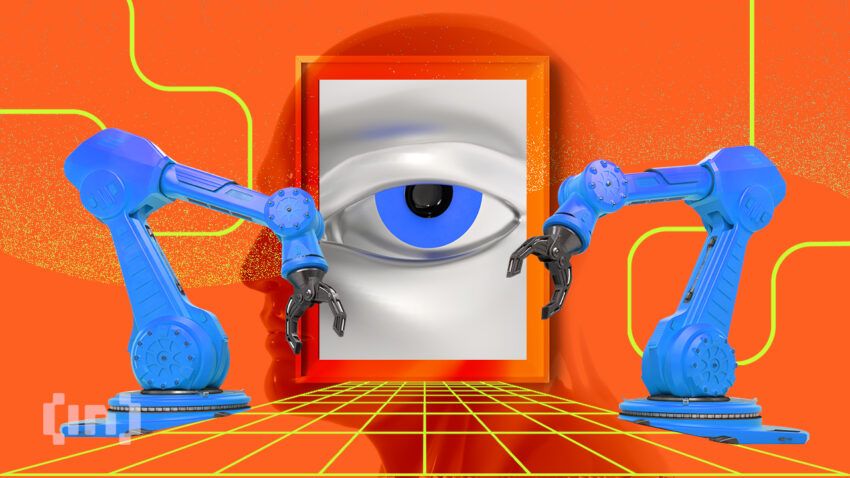
Ease of use
DALL-E 2 includes a relatively intuitive interface for user interaction. It is easy to use even if you do not have any prior experience with text-to-image AI art generators. The sign-up process is also straightforward — users can either register with their email or through their Google/Microsoft account.
Once you’re inside, OpenAI presents an overview of DALL-E 2’s capabilities, following which you can start experimenting with the tool. The process is simple – users can create an image request by providing a text prompt of up to 400 characters.
Each request yields four unique images, each portraying different styles and interpretations of the given description. If users seek further customization, DALL-E 2 allows the uploading of an existing image for editing. Further, users can request more variations of a previously generated image. The tool provides a fascinating opportunity to experiment with a vast range of artistic styles, from digital art to 3D renders.
Similarly, Craiyon is very easy to use. The signup process is simple — in fact, you can start experimenting with the tool even without signing up. Just enter a text prompt, and the AI art generator does the rest for you.
You can pick one style from the four available style options: Art, Drawing, Photo, and None. Each input prompt yields up to nine output images, and you can further change or modify each of those images. Note that Craiyon’s free version is noticeably slower than the pro (paid) version.
Output quality
Of course, no DALL-E Mini vs. DALL-E 2 comparison can be complete without weighing up the output of each. We will start with a basic prompt and then gradually up the ante to see how both tools fare with prompts with different levels of intricacies.
Prompt 1 (A very basic prompt): A pug sitting on a recliner
DALL-E 2 output:
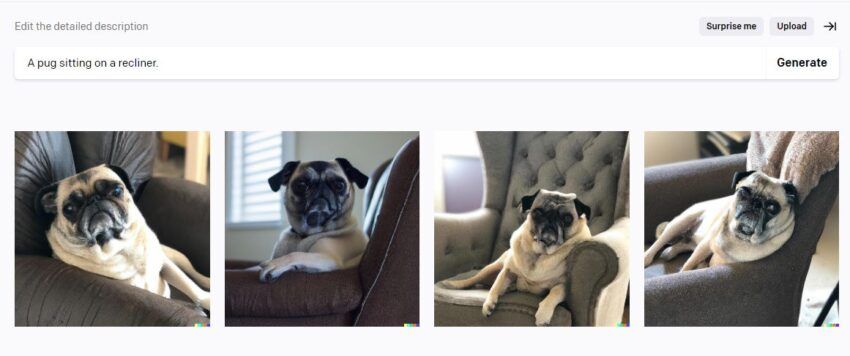
Craiyon output:
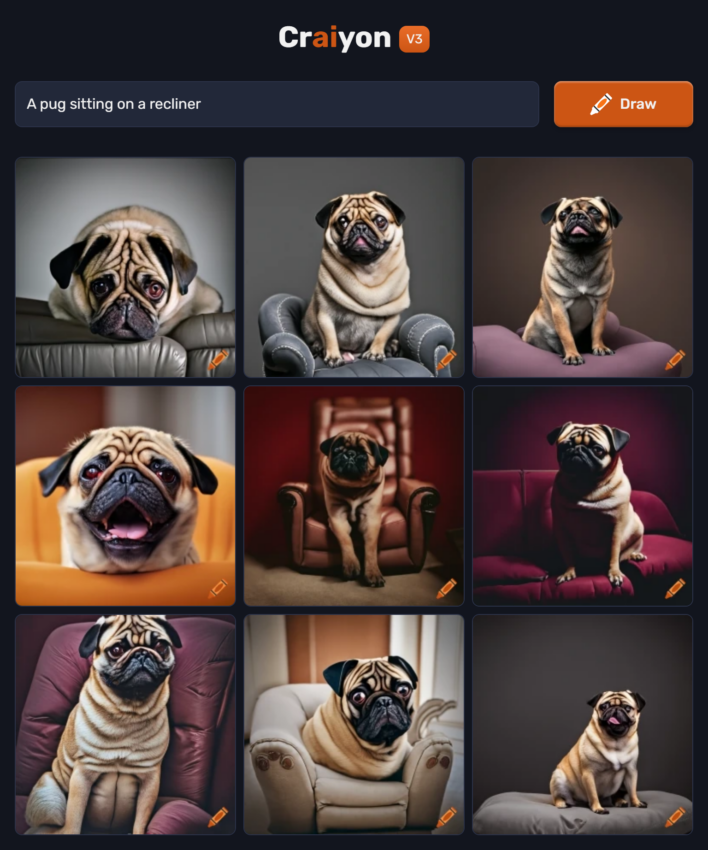
Prompt# : (Slightly more demanding prompt) A wolf, Witcher 3 style, high-definition, in vibrant hues and photorealistic rendering.
DALL-E 2 output:
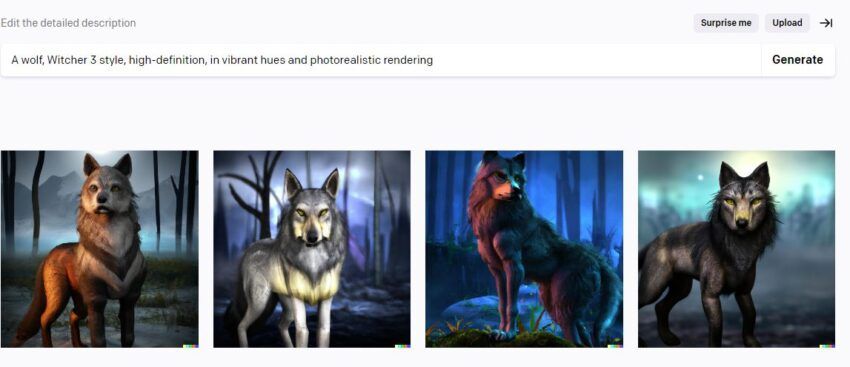
Craiyon output:
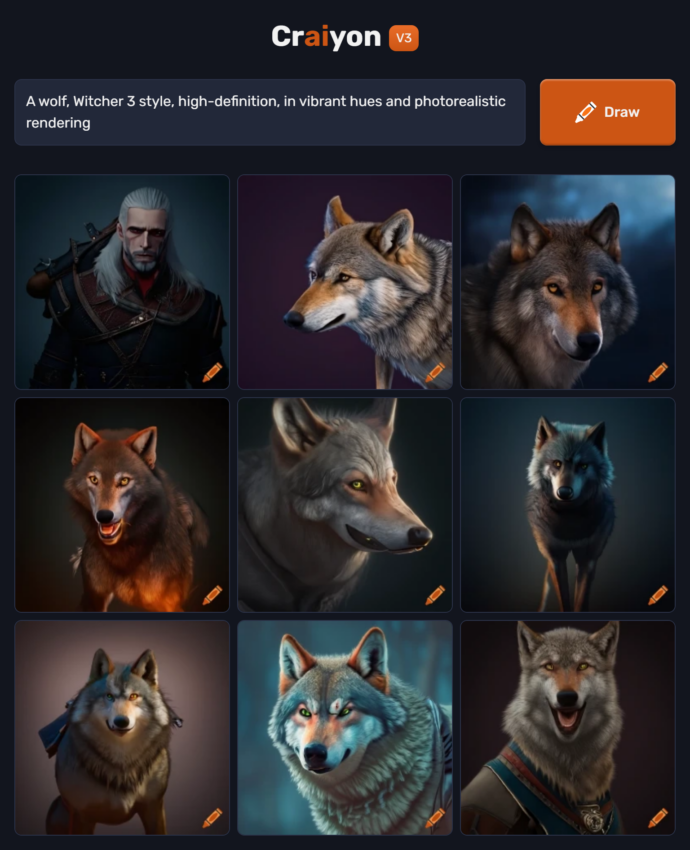
Prompt#3: (Slightly more complicated than the last): 3D model of a broccoli with comedian George Carlin’s beard, anthropomorphic arms, legs, face, and eyes
We ran into a slight hiccup with that prompt – DALL-E refused to comply, citing its content policy. We suspect it may have been due to restrictions on morphing or manipulating real people’s images. This is despite the fact that the prompt simply mentioned “George Carlin’s beard” without requesting to superimpose his face on the broccoli. Nonetheless, we proceeded with a slightly more generic prompt: “3D model of a broccoli with an adult man’s beard, anthropomorphic arms, legs, face, and eyes.” This time around, DALL-E 2 complied.

Craiyon had no issues with delivering the prompt. However, the output was somewhat off.
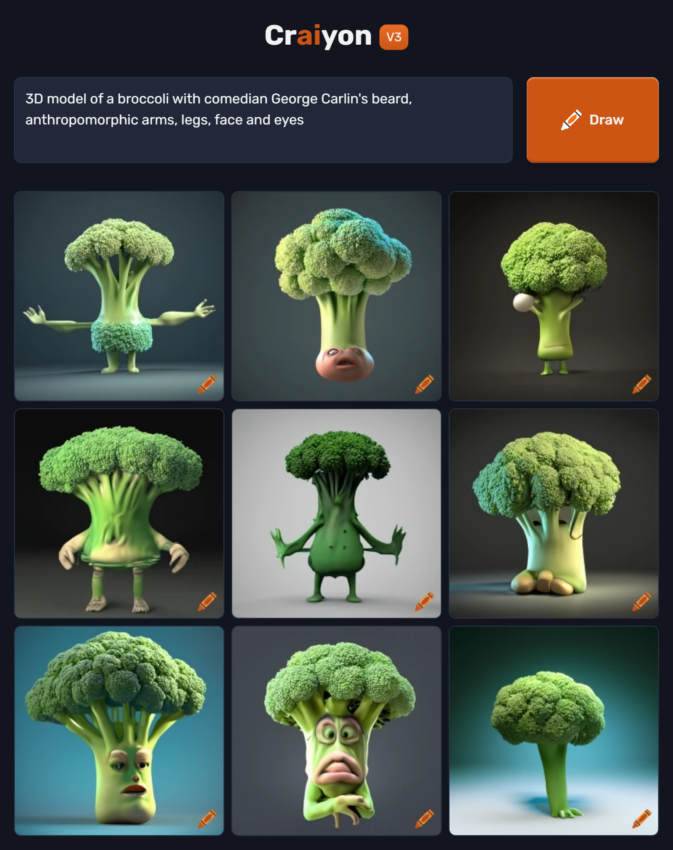
Prompt#4 (Human faces): Keanu Reeves
DALL-E 2’s output was noticeably off with this one. Almost all of the images it generated appeared as if these were face-swapped images of Keanu Reeves and another person.

Craiyon performed comparatively better with the same prompt.
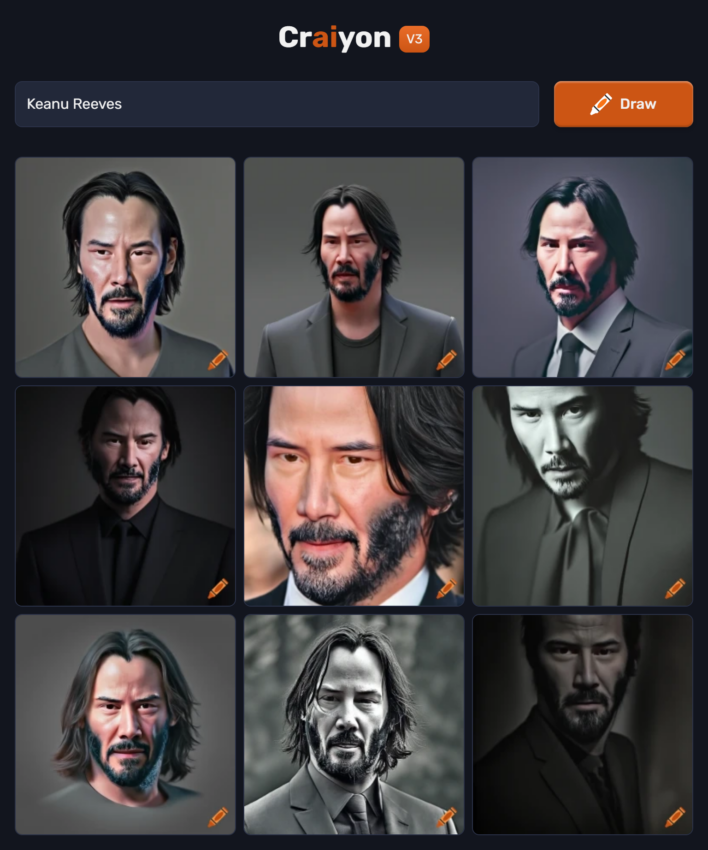
DALL-E Mini vs. DALL-E 2: Restrictions
OpenAI’s content policy
DALL-E 2 incorporates certain content guidelines to ensure user safety. Here are some key points from OpenAI’s content policy:
- When using DALL-E 2 for your projects, OpenAI expects you to maintain transparency and adhere to the company’s Content Policy and Terms of Use.
- OpenAI recommends you disclose AI involvement when sharing your work. While you have the option to remove the DALL-E signature/watermark in the bottom right corner, it is not acceptable to misrepresent the nature of the work. For instance, claiming that the work was entirely human-generated or an unaltered photograph of a real event goes against OpenAI’s Content Policy.
- Creating AI-generated images of public figures, including celebrities, is prohibited.
Previously, the company also prohibited uploading images of people, including realistic faces, even with consent. However, this policy was revised in September 2022 to allow face uploads.
While it may be inconvenient for some users, OpenAI says strict enforcement of these restrictions is crucial for protecting against the potential misuse of its technology. The rationale behind these restrictions is understandable until we have better solutions. After all, the risks associated with using AI, either to create deep fakes or spread misinformation, are real and should not be underestimated or ignored.
For instance, a 2021 study on the impact of deep fakes on society underlined the growing challenges in discerning the authenticity of manipulative online content:
“Hyper-realistic manipulations of audio-visual content, i.e., deepfakes, present new challenges for establishing the veracity of online content. [….] People cannot reliably detect deepfakes and neither raising awareness nor introducing financial incentives improves their detection accuracy.”
Nils C. Köbis, Barbora Doležalová, and Ivan Soraperra in “Fooled Twice”: National Library of Medicine
Furthermore, OpenAI must also consider the potential legal consequences if its platform is misused for nefarious purposes.
Craiyon is more lenient
In comparison, Craiyon’s content policy is much more lenient. While DALL-E 2 might refuse to comply with certain requests, such as generating images of “Elon Musk dancing in a club,” Craiyon doesn’t have any issues taking a shot at the same prompt.
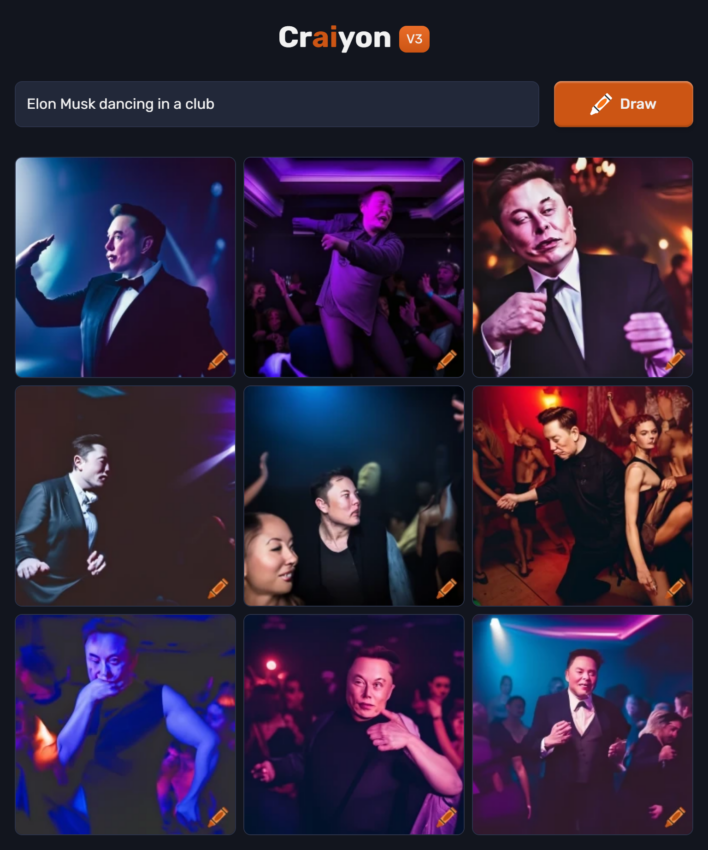
Which AI image generator is a better choice for you?
Ultimately when comparing DALL-E Mini vs. DALL-E 2, the choice boils down to the type of projects and designs that you’re working on. Are you in the market for something highly accurate and photorealistic? Or are you more of a hobbyist or someone who is just looking to experiment with these AI tools? As you can see from the comparison above, both tools appear to be evenly matched. However, being the bigger model with more parameters, DALL-E 2 definitely has certain advantages over Craiyon. These include an increased capacity for learning and understanding complex patterns.
You can try both tools for free, so giving each a whirl will help you determine which fits your needs better. But remember, whether you choose DALL-E 2 or Craiyon, the quality of the output will largely rest on the quality of the prompts you provide it.
Frequently asked questions
Is Dall E Mini the same as DALL-E?
Can I use Dall-E 2 for free?
Does DALL-E mini cost money?
What is the difference between DALL-E and Dall E2?
Disclaimer
In line with the Trust Project guidelines, the educational content on this website is offered in good faith and for general information purposes only. BeInCrypto prioritizes providing high-quality information, taking the time to research and create informative content for readers. While partners may reward the company with commissions for placements in articles, these commissions do not influence the unbiased, honest, and helpful content creation process. Any action taken by the reader based on this information is strictly at their own risk. Please note that our Terms and Conditions, Privacy Policy, and Disclaimers have been updated.


